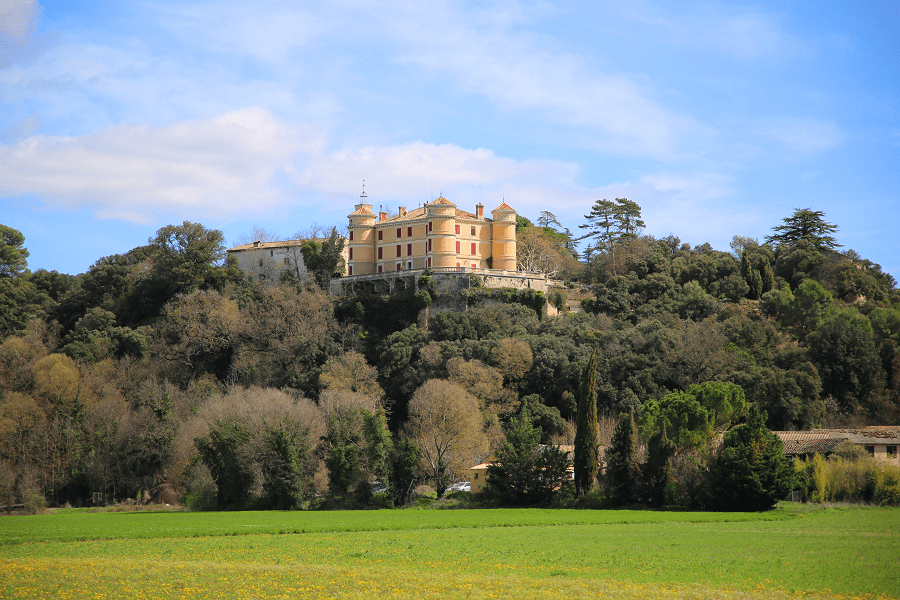The Castle of Verdú (cat. El Castell de Verdú) is one of the most emblematic buildings in the city (Lleida province, Catalonia, Spain) and it was around it that the streets and squares that now form the town of Verdú began to rise. It is declared a Cultural Asset of National Interest History.
The lands of the town of Verdú were reconquered from the Muslims towards the year 1056 by the Count Ramon Berenguer I, who gave them in allod to Arnau Company and his family, to favour the settlement development. The first news of the castle dates from the year 1080. The castle of Verdú was built for the protection of the new settlers.
The master tower dates back to the 12th century. It was not until the 13th century that the castle became the palace residence of the abbots of the monastery of Santa Maria de Poblet. Guillem de Cervera professed in this monastery and in 1230 donated the castle of Verdú. This patronage left strong architectural traces.
The most stately part of the castle was built at the time of Abbot Copons (1316-1348). This part corresponds to the barrel vault warehouse, an intermediate room that was probably used for agricultural activities, and a large hall on the top floor for receptions, which is the aforementioned room of Abbot Copons. On the outside there is the Escapçada tower, which takes its name from the fact that the top of the tower collapsed as a result of a bombardment, that the troops of King Juan II unloaded against the resistance of the Verdunians who were defending the cause of Prince of Viana, during the Catalan revolt against John II in 1472.
The main access stairs with balustrade were commissioned on October 10, 1572 by the abbot of Poblet to the master of houses Antoni Vernia. This entry has survived to this day, to become one of the most important Renaissance architectural pieces of the Urgell.
The castle was acquired in part by the City Council in 1988, which began rehabilitation works in the keep tower. Years later, the Generalitat de Catalunya carried out new rehabilitation works through the 1% cultural program. These works have allowed to slow the degradation of the building, consolidate the structure and the different facades of the building and recover original elements. The castle opened to the public in 2013.
The castle of Verdú is the center around which the town of the same name was formed. It is an irregularly shaped construction perfectly adapted to the terrain where it is located, which is at the top of the hill that crowns the town. The enclosure of the fortress has a polygonal plan, and in its interior are the various parts of the castle. The oldest element that can be seen is the circular tower, located in the middle of the courtyard and built in the 12th century or at the beginning of the 13th century. It is about 22 m high, it is divided into three parts or floors. The lowest part is a blind room covered with a false dome, it must have been used as a pantry or cellar. The main floor was also covered with a dome, accessed by means of a semicircular arc door located about 8 m from the outside floor level. Inside this room, a small door leads to a narrow spiral staircase that climbs to the upper floor, finished with two half-point arches that support the roof. This one is surrounded by battlements, and below you can see a series of holes that probably used to be a wood balcony.
The other castle buildings are already from the late 13th-15th centuries. A large hall stands at the foot of the tower, covered by eight pointed arches. Below this room most likely was winery, finished with a barrel-vault and above these two rooms, there is a large gothic hall, to the north of which is the Escapçada Tower. It is a quadrangular tower built as a buttress, when the castle was transformed into the residence palace of the abbots of Poblet, since the arches of the Gothic Room had a tendency to pressure opening. The castle is located almost at the foot of the parochial church of Santa Maria de Verdú.
The complex has undergone a profound restoration that has allowed to recover the original spaces and elements.













